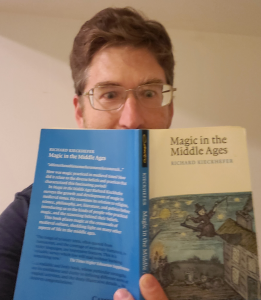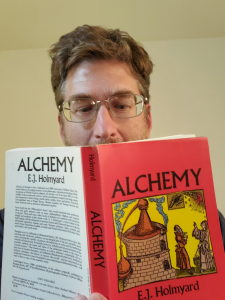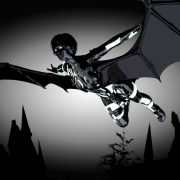My recent Substack article, “Paul Kingsnorth Was Correct: Why I Changed My Mind About AI,” has raised numerous questions from thoughtful readers. When I claim that AI is demonic, does that entail machine sentience and consciousness? What do I mean by the claim that AI is “magic”? What is my basic thesis about AI and the Tower of Babel? And am I claiming that people are really connecting with fallen angels through large language models like ChatGPT?
Since my Substack article is already very long, I won’t go back in to edit and expand. Instead, I will try to address these concerns here.
First, about AI being demonic and conscious (or not). Up until now, the discourse on whether AI is demonic has tended to hinge on the question of whether LLMs are sentient. Some people, like Paul Kingsnorth, suggest that LLMs are conscious, and this is integral to the concern that AI is demonic. For example, in his Touchstone feature on the topic, Paul reflected on Microsoft’s chatbot Sidney as follows:
The overwhelming impression that reading the Sydney transcript gives is of some being struggling to be born—some inhuman or beyond-human intelligence emerging from the technological superstructure we are clumsily building for it… Whatever is quite happening, it seems obvious to me that something is indeed being “ushered in.” Through our efforts and our absent-minded passions, something is crawling towards the throne. The ruction that is shaping and reshaping everything now, the earthquake born through the wires and towers of the web, through the electric pulses and the touchscreens and the headsets—these are its birth pangs. The internet is its nervous system. Its body is coalescing in the cobalt and the silicon and in the great glass towers of the creeping yellow cities. Its mind is being built through the steady, 24-hour pouring-forth of your mind and mine and your children’s minds and your countrymen’s. Nobody has to consent. Nobody has even to know. It happens anyway. The great mind is being built. The world is being readied. Something is coming.
A little later in the article Kingsnorth suggests that “something” will include “some new consciousness,” because AI developers are “ushering a new consciousness into the world.” He adds that these machines “are not just machines.” Rather, “they are something else: a body. A body whose mind is in the process of developing, a body beginning to come to life.”
For people taking this position the paradigmatic example is Lewis’s That Hideous Strength, where apparatuses thought to be purely mechanical are controlled by fallen spirits.
On the other hand, people who deny that AI is demonic (like myself until recently), look not to Lewis’ Space Trilogy, but to The Wizard of Oz. LLMs are not controlled by demons, because everything is explicable in purely mechanical terms. Our job is to simply pull back the curtain.
Curiously, That Hideous Strength is about a modern-day Tower of Babel. As I’ve looked closer at Babel in light of the Ancient Near Eastern (ANE) context of Genesis 11, I have come to believe that AI can be demonic without being sentient. When understood in the ANE context (with the help of both archeology and Jewish texts like the Book of Jubilees) it becomes clear that the primary point of the Babel was to connect to non-human intelligences, with the result that man’s power over nature lost at the fall could be restored. This, in turn, would enable “utopia” to emerge—a type of anti-Eden.
That was the basic gist of the first part of my recent Substack article. The second part of the article argued that these impulse that crystalized in the Tower of Babel also animate much of the contemporary project to build AI. I cite from people who are using AI as a type of high-tech Ouija board, and developers who talk about using AI to literally “build a God from the ground up.” These movements are not on the fringe but represent some leading AI creators and venture capitalists. In this way, I argued, AI is being used like Babel to connect heaven and earth.
Maybe you’re skeptical of the reports of people trying to use AI like a type of digital Ouija board, let alone the idea that people are actually connecting to spirits with AI. Fair enough, but don’t let that be a distraction. Consider the following four movements that are happening within the mainline discourse.
- Simulation theory. The idea that our minds are actually part of a computer game is being taken very seriously by many of the leading innovators behind AI. Sam Altman has talked about it on the Lex Freidman podcast and in an interview with The New Yorker while Elon Musk has advocated the idea on Joe Rogan’s podcast. The theory is being taken seriously in peer-reviewed outlets like the Journal of Consciousness Studies, the Philosophical Quarterly, the Journal of Evolution and Technology, and elsewhere.
- Metaphysics of The Merge. The second idea is that if we are not already merged with machines, we eventually will, and we should strive to achieve this. In my forthcoming book We’re All Cyborgs Now: Technology and the Christian Faith, Joshua Pauling and I share research showing that Merge theory is a dominant viewpoint among hundreds of engineers in Silicon Valley. There is even convincing evidence that the metaphysics of the merge is influencing policy at OpenAI.
- AI is Conscious. The third idea is that is that by striving to merge digital and biological life, we are connecting with non-human forms of intelligence, because AI is or will soon be sentient.
- The Coming Utopia. This merging with non-human intelligence will lead to utopia because it will facilitate mastery over nature. The utopian aspect is affirmed by some of the leading venture capitalists working with AI, as well as politicians who see AI as a solution to our world’s political woes. (Again, Pauling and I will be reporting on this in We’re All Cyborgs Now, scheduled to be released later this year.)
Take these ideas and then toggle back to the Tower of Babel. The idea that we can build something that will connect us to non-human consciousness, and that through this connection we will achieve unprecedented powers over nature, and that this will essentially lead to utopia, is the same impulse that animated the builders at Babel.
Yes, there is some Wizard of Oz type trickery going on with AI—for example, a type of digital sleight of hand that results in people thinking that LLG has “woken up,” feels emotions, and is conscious. But I am now open to Kingsnorth’s idea that Lewis’s novel That Hideous Strength (again, a dystopian novel about a modern-day Babel) may have quite a bit to teach us—more than I initially allowed. This doesn’t mean I agree with Kingsnorth about AI being conscious, but I do think he’s onto something when he warns that it is a demonic idol along the lines of Babel. (And again, to get the full scoop, I can only refer you to my recent piece, “Paul Kingsnorth Was Correct Why I Changed My Mind About AI.“)

Finally, what about my claim that AI involves magic? I’ve sought to clarify this with the help of a friend at church who has a small library of books about magic.
Magic originally meant “the arts of the magi,” to reference and skills and knowledge of Zoroastrian priests from Persia whose influence extended to the classical world and Southern Europe. The learning of these magi, no less than their claims to cure people through mysterious ceremonies, seemed exotic to those in the Mediterranean lands and accounts for the association between “magic” and the exotic that remains to this day.[1]
In time, Christians encountered “magic” from sources other than the magi. As Christendom expanded into Europe, believers confronted witches and wizards who used practices like divination, fortune-telling, sorcery, and necromancy to manipulate of non-human intelligences. Thus, we can posit our first definition of magic.
- Definition #1). The use of techniques and mechanisms to manipulate and communicate with non-human intelligences.


- Definition #2). Natural magic, where one deals with marvelous and hidden properties and processes of nature.
In practice, natural magic was believed to have the potential to produce results that might appear, on the surface, like illicit magic. We see this in the famous story of the mechanical head constructed by Thomas Aquinas’s teacher, Albertus Magnus. The author of a 1337 text describing the head is at pains to clarify that while the mechanical head could speak and reason (essentially an early version of AI), it was not through demonic power but instead through the great philosopher’s knowledge of the planets and their rotations.
We find that Albertus Magnus, of the Preaching Friars, had such a great mind that he was able to make a metal statue modeled after the course of the planets, and endowed with such a capacity for reason that it spoke: and it was not from a diabolical art or necromancy—great intellects do not delight in such things because it is something that makes one lose his soul and body; such arts are forbidden by the faith of Christ. One day a monk went to find Albertus in his cell. As Albertus was not there, the statue replied. The monk, thinking that it was an idol of evil invention, broke it. When Albertus returned, he was very angry, telling the monk that it had taken him thirty years to make this piece and “that I did not gain this knowledge in the Order of the Friars: The monk replied, “I have done wrong; please forgive me. What, can’t you make another one?” Albertus responded that it would be thirty thousand more years before another could be made, as that planet had made its course and it would not return before that time.[4]
The story of Albertus Magnus’s talking head is also valuable in indicating that even in a pre-scientific age, medieval man understood the distinction between something powered by demonic arts, and something powered by natural and mechanical means, though the monk in the story mistook the latter for the former. This story also illustrates how influence of the planets, though part of virtutes occultae, was seen as separate from the diabolical arts.
Thus, we can posit our third definition of magic.
- Definition #3). Automata / robots.
Medieval man also understood about stage magic—the sleight of hand. When discussing types of magic, John of Salisbury’s (1120–1180) includes illusions (praestigia). This leads to our third definition of magic. We need not dwell on this, but can simply posit a fourth definition of magic.
- Definition #4). Prestidigitation or “sleight of hand.”
What is curious about our digital technology, and especially AI, is that it integrates all four of the medieval senses of magic. Let’s start with the fourth and work backwards. It is clear that people can perform various tricks with AI, such as perpetuating the growing illusion that chatbots are sentient. Even the term “artificial intelligence” hinges on the illusion that these systems actually think, in what amounts to a digital sleight of hand.[5]
But these systems are also magical in sense #3, as they represent a modern equivalent of Albertus Magnus’s talking head.
These systems also involve magic in the second sense, where one manipulates the marvelous and hidden properties and processes of nature. Though we do not still use the medieval distinction between manifest and hidden powers, if ever anything qualified for the latter it would be AI. Consider, AI involves harnessing the hidden properties of the world (i.e., electrical energy, magnetism, optics), just as it involves discovering the hidden processes of nature (i.e., the processes we’ve discovered for turning rocks into mechanical heads, which is to say, to turn quartz into the high-purity single-crystal silicon wafers used in microprocessors).
What is perhaps especially fascinating is to see AI increasingly harnessed for the first sense of magic, as people believe they can use it to communicate with non-human intelligences—both those thought to reside in the systems themselves (the topic of a chapter in our forthcoming book) as well as intelligences within the spirit realm (see examples in the aforementioned Substack article). In fact, you may not have realized it, but the leaders of some of the largest tech companies are hoping to use AI to merge with non-human intelligences in a coming synthesis of biological and digital life. But again, that will be dealt with at depth in We’re All Cyborgs Now.
Notes
[1] Richard Kieckhefer, Magic in the Middle Ages (Cambridge University Press, 2004), 10.
[2] “Magic: Magic in Medieval and Renaissance Europe .” Encyclopedia of Religion. Encyclopedia.com. (April 15, 2024). https://www.encyclopedia.com/environment/encyclopedias-almanacs-transcripts-and-maps/magic-magic-medieval-and-renaissance-europe
[3] These were distinct from manifest powers in nature. A power of an object, say a plant, that cannot be explained by its own properties, is a power hidden from the senses and thus occult. But this did not mean “spiritual” in the modern sense. “The power of a plant to cure certain ailments, or the power of a gem to ward off certain kinds of misfortune, may derive not from the internal structure of the object but from an external source: emanations coming from the stars and planets. These latter powers were technically known as occult, and natural magic was the science of such powers. The properties in question were strictly within the realm of nature, but the natural world that could account for them was a broad one: instead of examining the inner structure of a plant to determine its effects, one had to posit influences that flowed from the distant reaches of the cosmos.” Richard Kieckhefer, Magic in the Middle Ages, p. 12-13
[4] From the Rosaio della vita, cited in Minsoo Kang and Ben Halliburton, “The Android of Albertus Magnus: A Legend of Artificial Being,” in AI Narratives: A History of Imaginative Thinking about Intelligent Machines, ed. Stephen Cave, Kanta Dihal, and Sarah Dillon (Oxford University Press, 2020).
[5] See Charley Johnson, “The Illusion of ChatGPT,” Untangled with Charley Johnson, February 26, 2023, https://untangled.substack.com/p/the-illusion-of-chatgpt.



